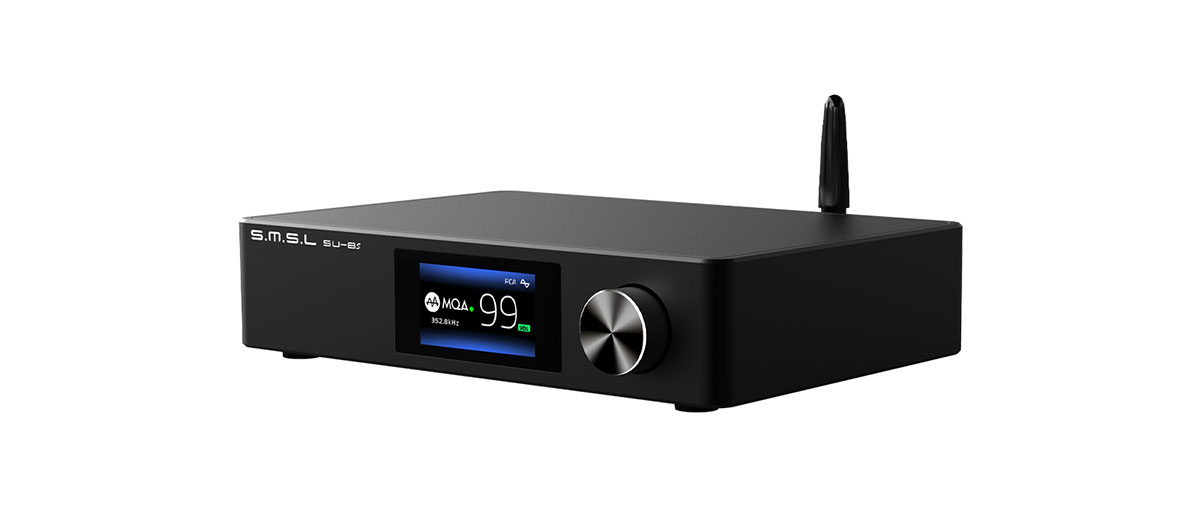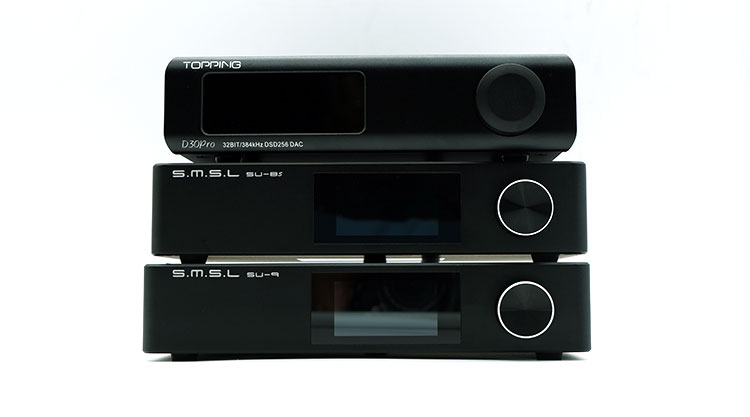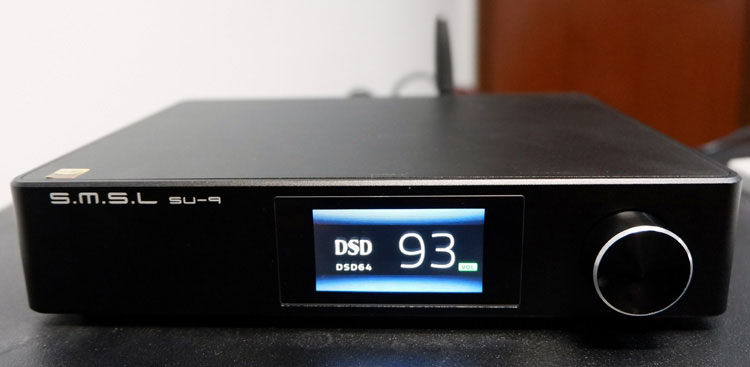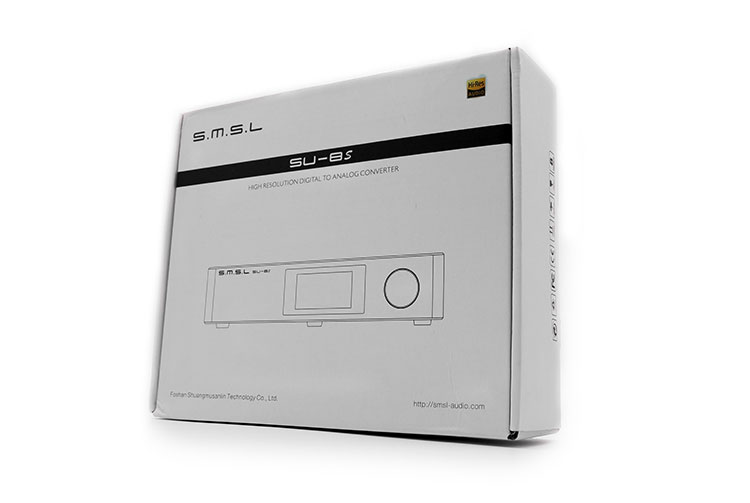Synergy
Having a distinct character, the SU-8s lets its character shine through with each amp and headphone pairing. Pairing it with Topping’s A30 Pro creates a source chain that ends up being too warm for my taste, and ends up being too much of a good thing at times.
Pairing it on the other hand with SMSL’s own SH-9, the pairing is satisfactory, giving the SH-9 some much-needed warmth, while retaining the drier midrange presentation.
The most enjoyable pairing in my opinion is with the headphone amplifier that the SU-8s is designed to work with, which is the SH-8s.
This pairing created a generally balanced source chain with a weighty punchy bass region, a controlled, but still euphonic midrange, and a crystalline and present treble region. It simply shows that SMSL has designed the SU-8s and the SH-8s to work synergistically together.
The SH-8s and SU-8s pairing’s generally balanced presentation allows me to enjoy most of the headphones in my collection. However, the most enjoyable headphone pairing with the stack is my Sennheiser HD600, as the weightier bass response makes the HD600 bass roll-off less distinct while having a euphonic midrange response and a sweet treble presentation.
Although this pairing leans towards the more intimate side of things, images are still placed accurately within the soundstage.
Select Comparisons
Topping D30 Pro
Design
Aesthetically, the D30 Pro takes on a more classical approach, where there is an orange 7-segment display that shows the sample rate and the volume level depending on the situation. Aside from that, the 2 DACs have similar elements in their design, where they both have a volume knob on the left side, and the inputs and outputs are all located in the rear of the device.
Dimensionally, both devices are about the same size, except that the D30 Pro is about half an inch narrower. While the chassis of both DACs are primarily made of aluminum, the D30 Pro’s front fascia is made of a color-matched plastic material instead of having aluminum throughout.
At the rear of both devices, the inputs for USB, coaxial and optical can be found. Notably absent on the D30 Pro though is the input for the Bluetooth aerial since the D30 Pro doesn’t have an option for Bluetooth connectivity. While both DACs also use a standard IEC power cable, the D30 Pro has a mains switch that physically isolates the device from the mains.
Interface
With both DACs having a volume wheel that can be pressed, as well as a remote control, I would have expected them to have a similar way of interacting.
However, with the D30 Pro, most of the functions of the DAC can only be accessed if there is a remote control. Functions such as filter, output mode, and brightness control can only be accessed using the remote control, and there’s no way to do it using the volume knob.
In contrast, the interface on the SU-8s is more comprehensive, where there is a menu system that can be accessed both using the remote control, as well as using the volume knob.
Technical
As mentioned earlier, the D30 Pro doesn’t have Bluetooth connections, while the other digital connections are available. Another big difference is the USB controller chip, where the D30 Pro only has an XMOS XU208 chip, instead of an XU216.
Furthermore, the DAC chips are very different as well, where the D30 Pro utilizes 4 x CS43198 DAC chips from Cirrus logic. This ends up limiting the D30 Pro to just 32bit/384kHz PCM and DSD 256 and no MQA decoding capability.
Although there is a marked difference between the DACs, I wouldn’t simply dismiss the D30 Pro as obsolete, since both DACs can still decode most available formats today. It’s just that the D30 Pro doesn’t have any support for MQA decoding.
Performance
Starting from the bass, the D30 Pro puts less weight behind each bass note comparatively. However, each bass note takes on a more rounded but smooth character, so detail retrieval in the bass region is about equal on both DACs. Attack and decay end up being more natural on the D30 Pro though since it’s a bit faster.
Going into the midrange, the vocal performance is more euphonic and harmonically richer with the D30 Pro. However, there seems to be a bit less weight in the midrange, giving both the vocal presentation and instrument presentation a less planted fundamental.
Treble on the other hand is more integrated with the midrange. This allows midrange instruments to be presented with natural harmonic overtones. While treble quantity is natural, the detail retrieval with treble instruments comparatively lacks a sense of bite.
The soundstage presentation is more intimate with the D30 Pro. The lateral positioning of the images within the soundstage is comparable, however, the depth is more squashed together in a layer of the soundstage with the D30 Pro. Dynamic range is comparatively compressed with the D30 Pro as well.
SMSL SU-9
Design
When looking at the 2 DACs, they’re virtually identical. If you put them side by side, there are only 2 things that will distinguish one amplifier from the other, the first is the naming in the upper right corner of the DAC. The other difference is that the SU-9 is about half an inch deeper. Aside from those 2 minor differences, the 2 DACs are virtually identical.
The interface of both devices is also very similar, where both can work with the same remote control. The menu on both DACs is also virtually identical, except that the SU-9 doesn’t have options to switch off the RCA or the XLR outputs one by one.
Then there’s the FN key configuration sub-menu that isn’t implemented with the SU-9. Aside from these minor differences, interacting with both devices is an identical experience.
Technical
While they are physically virtually identical, the internal circuitry of the 2 DACs is different. While they both have XMOS XU216 USB controllers which allow them to both do full MQA rendering, the DAC chips are different, where the SU-9 employs ESS’ flagship DAC, the ES9038Pro. They both are capable of decoding the same 32bit/768kHz PCM and DSD 512 though.
Both DACs are capable of Bluetooth 5.0, the SU-9 is equipped with more Bluetooth codecs. In addition to SBC, AAC, AptX, and AptX HD which comes standard with both DACs, only the SU-9 can also decode both LDAC and UAT. These Bluetooth codecs allow the SU-9 to decode even higher resolution Bluetooth streams up to 24bit/192kHz.
Performance
With such similar looks, I was expecting the similarities to seep into the performance of both DACs. And to some extent, they are similar. However, with the SU-9 being the “higher” model, its performance needs to back up its claim to that higher model number.
Listening to the bass, similarities could be picked up in that both DACs have a weighty bass presentation with the SU-9 having less of that bass weight behind each note while having a more immediate sense of attack and decay. While general bass tonality is practically the same, the SU-9’s bass presentation is simply more fleshed out.
Moving into the midrange, the vocal presentation is practically the same. And I can say that the forwardness and the sense of controlled euphony are conveyed in a similar level on both DACs. It’s only in instrument tones that the 2 DACs differ slightly, where the SU-9 has a brighter tilt comparatively.
With the treble presentation, both DACs have a similar level of treble sparkle, which means that they’re not treble shy, but not overly bright. However, the SU-9 isn’t satisfied with just being smooth and sweet, but it also has more bite with each percussive strike. Finally, the SU-9 has a more elevated treble extension, which allows it to have a better sense of air.
In terms of absolute soundstage width, both DACs have a similar soundstage width. However, the airiness of the SU-9 allows it to delineate the elements within the soundstage more clearly.
While the directionality of the images is equally accurate, the depth within the soundstage is more apparent with the SU-9. When it comes to dynamic range though, both DACs perform equally capably.
Our Verdict
My first impression of the SU-8s is that it looks strikingly similar to the SU-9 that I’ve reviewed a few months back. And when it arrived, my expectations were not far from reality.
While the 2 DACs have a close relationship, the SU-8s takes most of the SU-9’s features and offers it at a much lower price point.
So you can call it a capable DAC in its own right, with its warm but still engaging presentation, I believe that the SU-8s is designed to perfectly synergize with the SH-8s amplifier.
With the synergistic relationship of this DAC/amp combo, they create a presentation that’s both warm, engaging, and agile while being smooth and controlled.
SMSL SU-8s Specifications
- Input: USB / Optical / Coaxial / Bluetooth
- Output: RCA /XLR
- THD+N: 00009%(-121dB)
- Dynamic range: XLR 130dB
- RCA 123dB
- SNR: 130dB
- Output impedance: XLR 207Ω
- RCA 142Ω
- USB transmission: Asynchronization
- USB compatibility: Windows 7 / 8 / 8.1 / 10, Mac OSX、Linux
- Bit depth: USB 1bit, 16 ~ 32bit
- Optical / Coaxial 1bit, 16 ~ 24bit
- Sampling rate: USB PCM 44.1 ~ 768kHz
- DSD 2.8224 ~ 22.5792MHz
- Optical / Coaxial PCM 44.1 ~ 192kHz
- DSD DSD64(DoP)
- Bluetooth specification: 5.0 (Support APTX,SBC, APTX-HD ) ]
- Power Consumption: 5W
- Standby power: <0.5W
- Size: 5X154X40mm (WxHxD)
- Weight: 79kg




